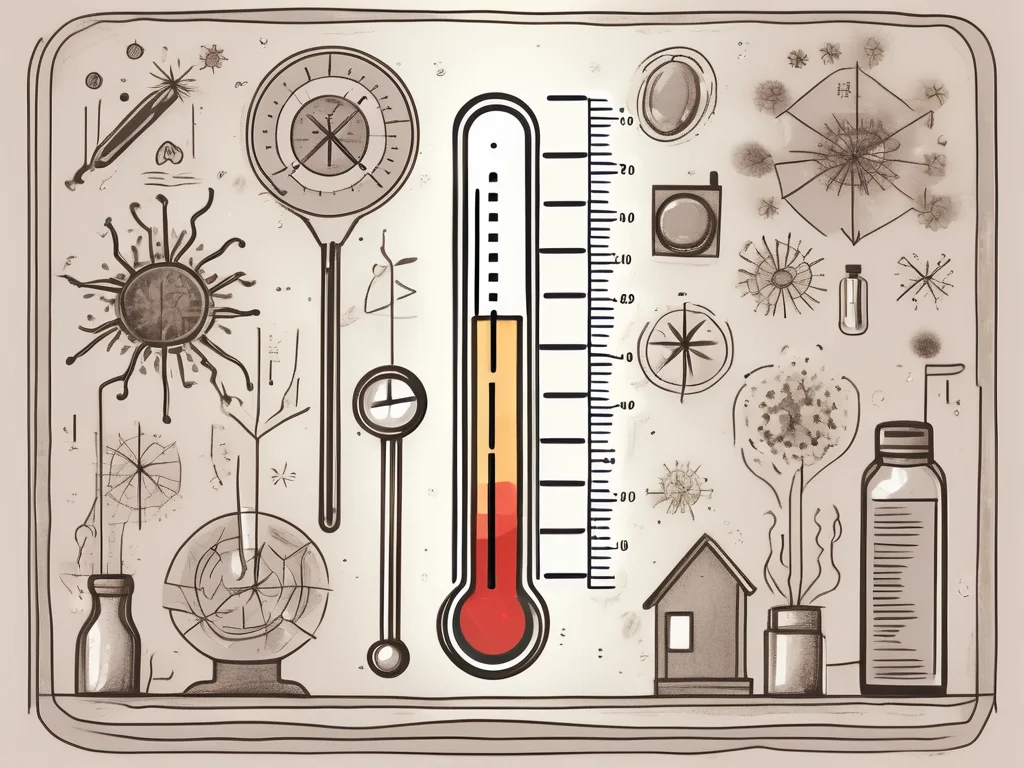Viral fevers are widespread illnesses that impact individuals across all age groups. While most cases are mild and resolve on their own, certain populations face a higher risk of severe symptoms and complications. Understanding who is most vulnerable, along with the causes, symptoms, and preventive measures for viral fevers, is critical for effective management and prevention. This blog explores the high-risk groups for severe viral fever symptoms, how these fevers spread, and practical steps to stay protected.
What Is a Viral Fever?
Understanding Viral Fever Causes
Viral fevers occur when viruses invade the body, triggering an immune response that leads to symptoms like fever, fatigue, and body aches. Common viruses responsible include influenza, respiratory syncytial virus (RSV), adenovirus, and rhinovirus. These viruses are highly contagious and can spread through respiratory droplets, direct contact, or contaminated surfaces.
How Viral Fevers Differ from Bacterial Fevers
Unlike bacterial fevers, which often have a sudden onset and localized symptoms (e.g., sore throat or ear pain), viral fevers typically develop gradually and include symptoms like cough, congestion, and body aches. Viral fevers usually resolve without antibiotics, while bacterial infections may require targeted treatment.
Who Are the High-Risk Groups for Severe Viral Fever?
Age-Related Risks for Severe Symptoms
Certain age groups are more vulnerable to severe viral fever symptoms due to weaker or underdeveloped immune systems:
- Young Children: Infants and young children have immature immune systems, making them prone to complications like dehydration or respiratory distress.
- Older Adults: Aging weakens the immune response, increasing the risk of severe symptoms and hospitalization.
Health Conditions That Increase Risk
Individuals with underlying health conditions are more susceptible to severe symptoms:
- Chronic Diseases: Conditions like asthma, diabetes, or heart disease impair the body’s ability to fight infections.
- Weakened Immune Systems: People with compromised immunity, such as those undergoing chemotherapy or living with HIV, face higher risks of complications.
How Do Viral Fevers Spread?
Common Modes of Transmission
Viral fevers are highly contagious and spread through:
- Respiratory Droplets: Coughing or sneezing releases droplets that can infect others.
- Direct Contact: Touching an infected person or contaminated surfaces (e.g., doorknobs) can transfer the virus.
- Surface Contamination: Viruses like influenza can survive on surfaces for up to 48 hours.
Factors Influencing Spread
Several factors contribute to the rapid spread of viral fevers:
- Crowded Environments: Urban areas or densely populated settings increase transmission risk.
- Poor Hygiene: Inadequate handwashing or sanitation facilitates viral spread.
- Low Vaccination Rates: Lack of vaccines, such as the influenza vaccine, heightens community vulnerability.
Symptoms of Viral Fever to Watch For
Early Signs of Viral Fever
Initial symptoms include:
- Fatigue
- Low-grade fever
- Muscle aches
- Chills
- Headache
- Sore throat or nasal congestion
These signs can mimic the flu or a cold, so early recognition is key to managing the illness effectively.
Progression of Symptoms
As the fever progresses, more severe symptoms may develop:
- High fever
- Persistent cough
- Chest congestion
- Difficulty breathing
- Gastrointestinal issues (nausea, vomiting, diarrhea)
Monitor symptoms closely, as they can indicate the need for medical attention, especially in high-risk groups.
Diagnosing Viral Fever
How Doctors Diagnose Viral Fever
Diagnosis is primarily based on clinical symptoms and physical exams. In some cases, healthcare providers may order:
- Blood Tests: To confirm a viral infection or rule out bacterial causes.
- Viral Tests: To identify specific viruses, such as influenza or RSV.
Treatment Options for Viral Fever
Medical Treatments
Since antibiotics are ineffective against viruses, treatment focuses on symptom relief:
- Rest and Hydration: Essential for supporting the body’s recovery.
- Over-the-Counter Medications: Pain relievers like ibuprofen or acetaminophen reduce fever and discomfort.
- Antiviral Medications: Prescribed for specific viruses, such as influenza, in severe cases.
Home Remedies for Symptom Relief
Effective home remedies include:
- Drinking plenty of fluids to prevent dehydration
- Using a humidifier to ease congestion
- Gargling with warm salt water for sore throat relief
- Consuming warm soups or herbal teas to soothe symptoms
Always consult a healthcare provider before trying home remedies, especially for high-risk groups.
Preventing Viral Fevers
Hygiene Practices to Reduce Risk
Good hygiene is critical for preventing viral fevers:
- Frequent Handwashing: Wash hands with soap for at least 20 seconds.
- Respiratory Hygiene: Cover your mouth and nose when coughing or sneezing.
- Avoid Contact: Stay away from infected individuals and crowded places during outbreaks.
Importance of Vaccinations
Vaccines, such as the annual influenza vaccine, significantly reduce the risk of contracting and spreading viral fevers. Staying up to date with vaccinations is especially important for high-risk groups.
When to Seek Medical Attention
While most viral fevers resolve with rest and home care, seek medical help if you or a loved one experiences:
- Persistent high fever (above 103°F or lasting more than 3 days)
- Severe symptoms like difficulty breathing, chest pain, or confusion
- Signs of dehydration (e.g., dry mouth, reduced urination)
- Worsening symptoms in high-risk groups, such as young children or those with chronic conditions
Prompt medical care can prevent complications and ensure proper treatment.
Conclusion
Viral fevers are common but can pose significant risks for certain groups, including young children, older adults, and individuals with chronic health conditions or weakened immune systems. By understanding the causes, symptoms, and transmission modes of viral fevers, you can take proactive steps to protect yourself and others. Practicing good hygiene, staying vaccinated, and seeking timely medical care when needed are key to managing and preventing severe outcomes. Stay informed, stay cautious, and prioritize your health to navigate viral fevers effectively.



